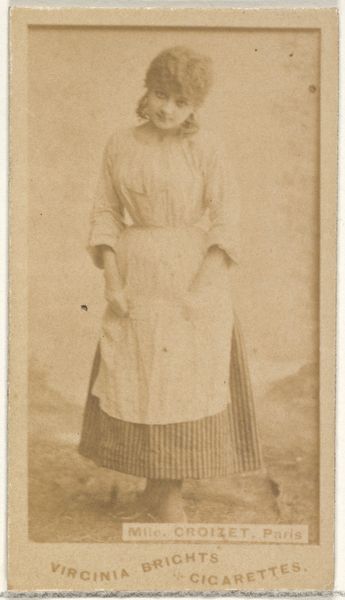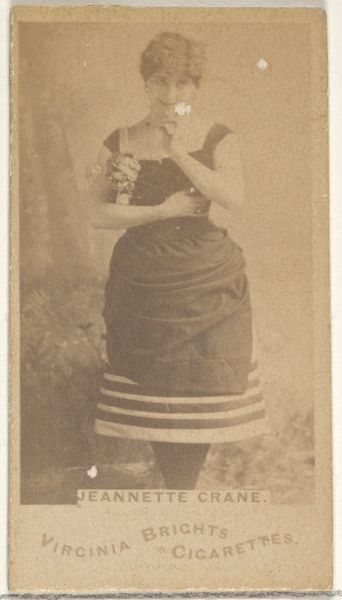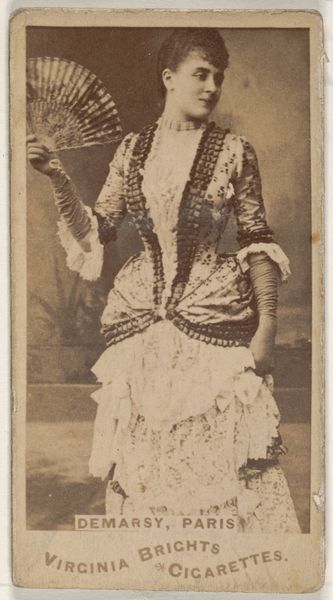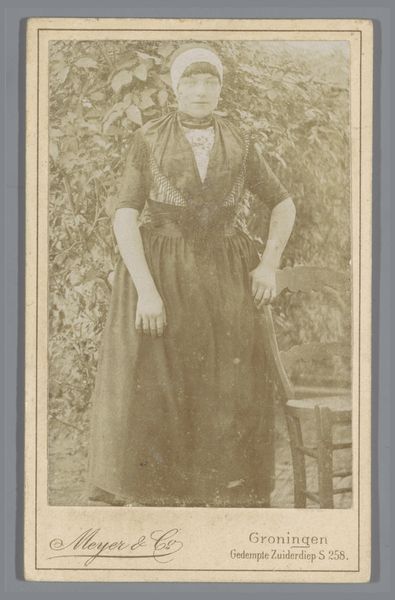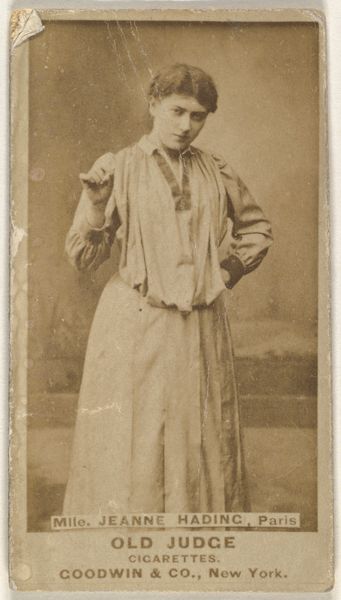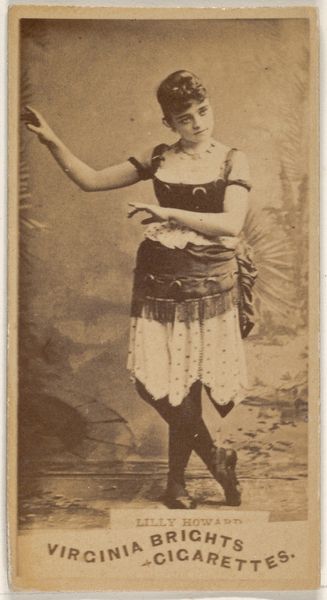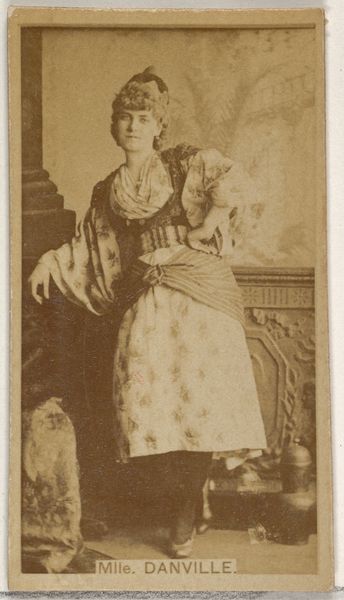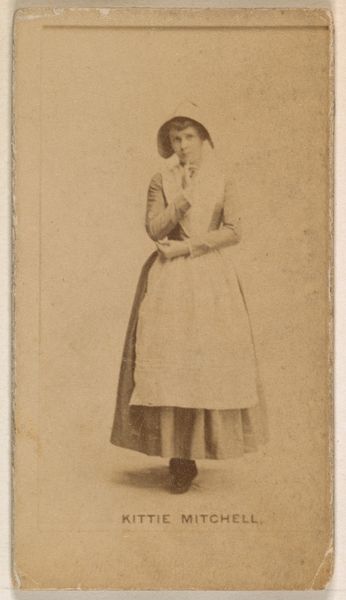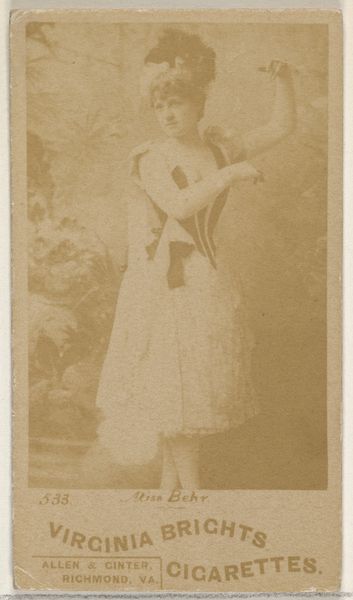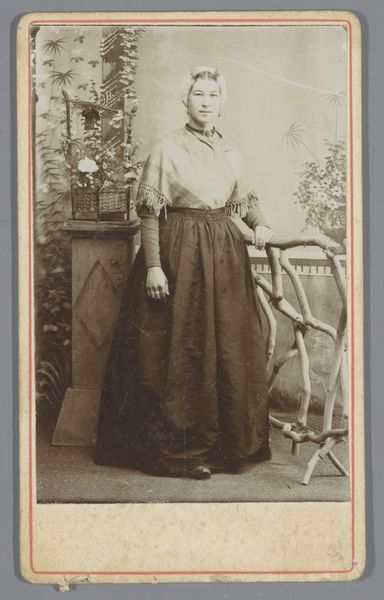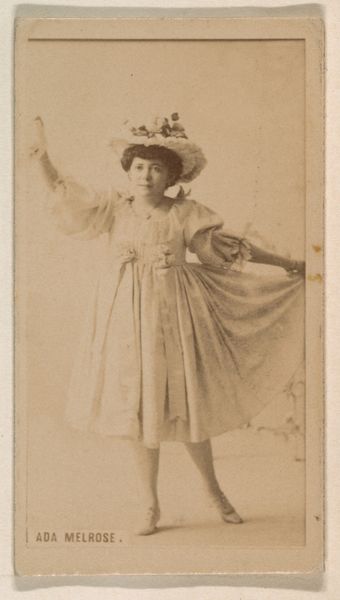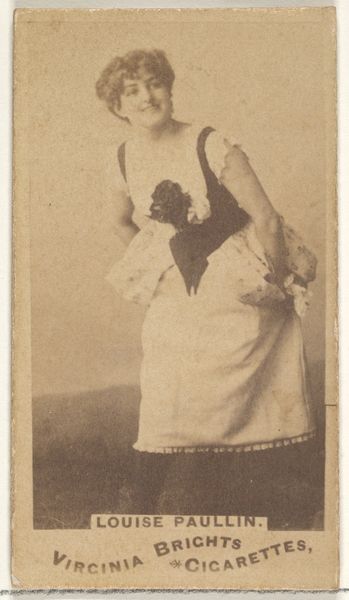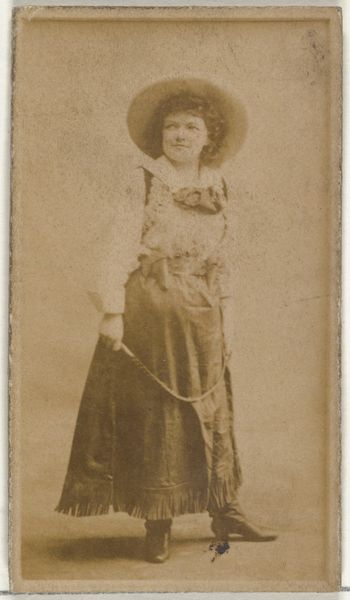
Lizzie Derious, from the Actors and Actresses series (N45, Type 1) for Virginia Brights Cigarettes 1885 - 1891
0:00
0:00
albumen-print
#
portrait
#
aged paper
#
toned paper
#
19th century
#
albumen-print
Dimensions: Sheet: 2 3/4 x 1 3/8 in. (7 x 3.5 cm)
Copyright: Public Domain
Curator: The Metropolitan Museum of Art holds an intriguing piece titled "Lizzie Derious, from the Actors and Actresses series (N45, Type 1) for Virginia Brights Cigarettes," dating from 1885 to 1891. This albumen print is a product of Allen & Ginter, a name synonymous with this sort of collectible card. Editor: There’s a dreamy quality to it, a sense of capturing fleeting youth. The aged paper contributes, no doubt, to the nostalgic tone, but also there is something about the layering of tones here, it makes her seem like a figure emerging from a half-remembered tale. Curator: The albumen print process certainly lends a distinct visual texture. The photograph presents Lizzie Derious, seemingly an actress of some renown at the time, within a carefully arranged composition. The structural arrangement is what I find compelling: a clear foreground, midground, and suggested background establish a definite pictorial space. Editor: Indeed, beyond its formal construction, Lizzie herself projects an interesting blend of innocence and knowingness. That bit of lace held to her lip feels almost coy. Lace and nets have a very long history of signalling both purity and enticement. Her clothing reinforces that theme, with that prim, high collar contrasting so boldly with the puffiness of her skirt and sleeves. Curator: What also strikes me is how the photographic plane itself functions. The texture of the albumen silver print contributes depth to the composition as a visual object in itself. Editor: The very fact it was distributed with cigarettes is significant; this object acted as a sort of proto-advertisement, yes? It also raises all kinds of questions around commerce, celebrity, and image reproduction during the late 19th century. The Japonisme evident in the presentation also adds layers of meaning. It points to America’s increasing awareness of different cultures during that time. Curator: True, the combination of commercial purpose and artistic elements complicates the photograph’s place within our understanding of portraiture. Considering how these were collected, the context of collecting impacts interpretation. It is, ultimately, a potent symbol. Editor: Agreed. It seems deceptively simple upon first viewing, but it holds so much in its details—a fascinating study of culture.
Comments
No comments
Be the first to comment and join the conversation on the ultimate creative platform.
